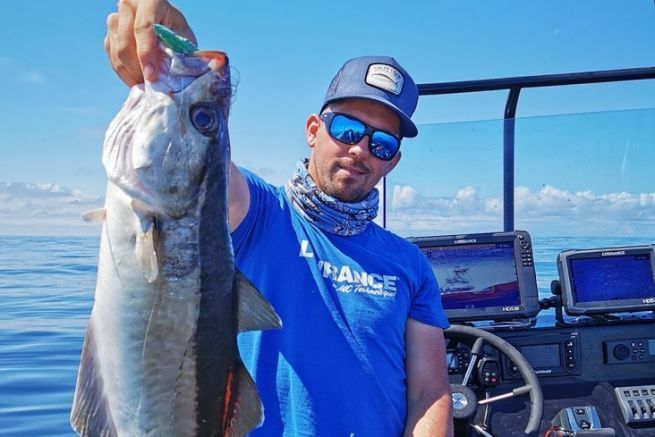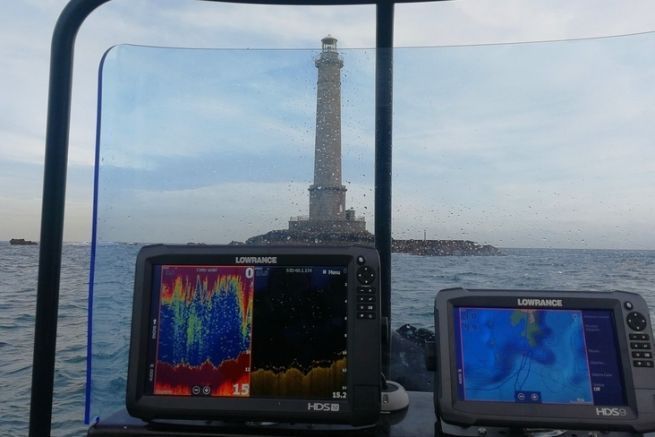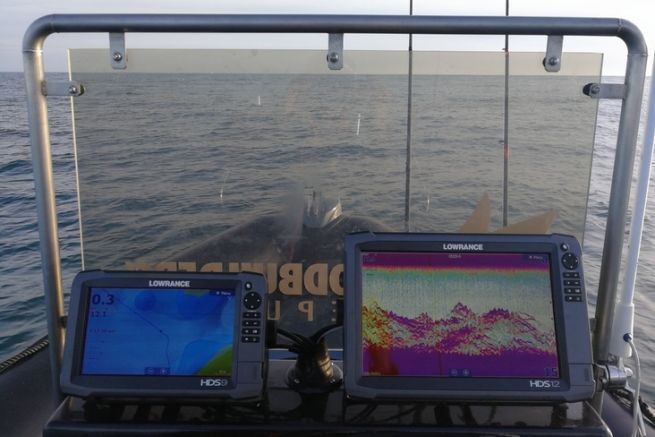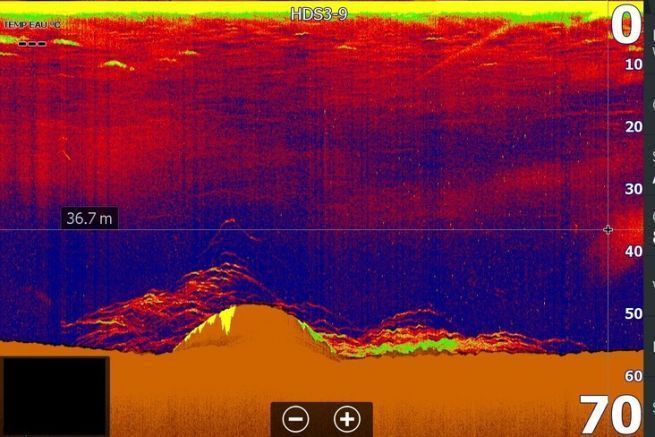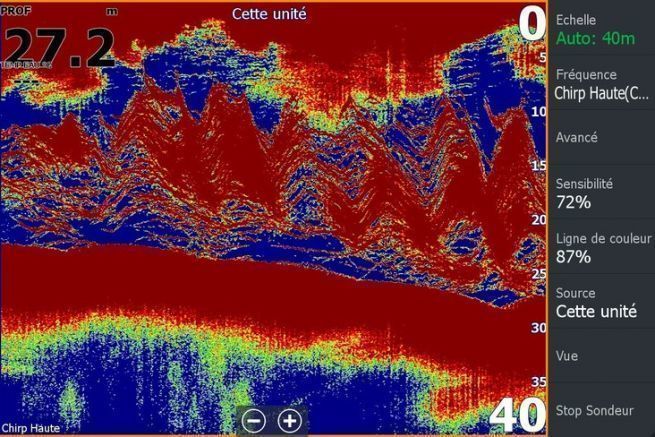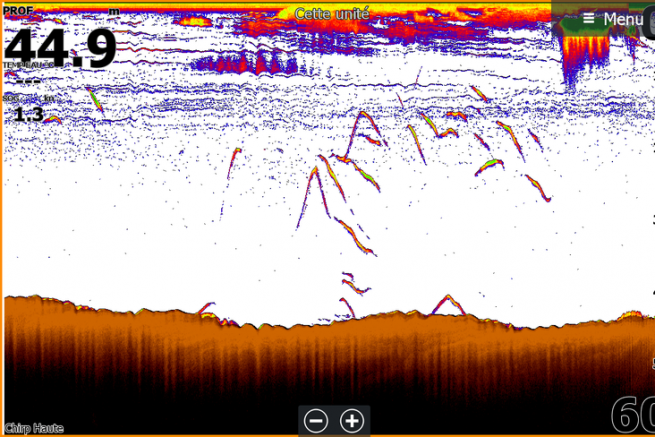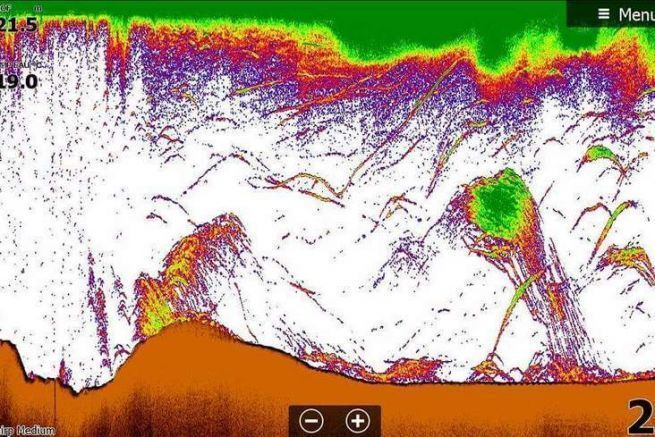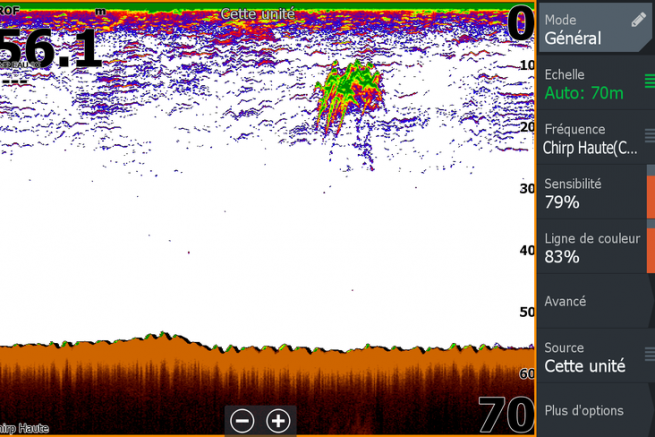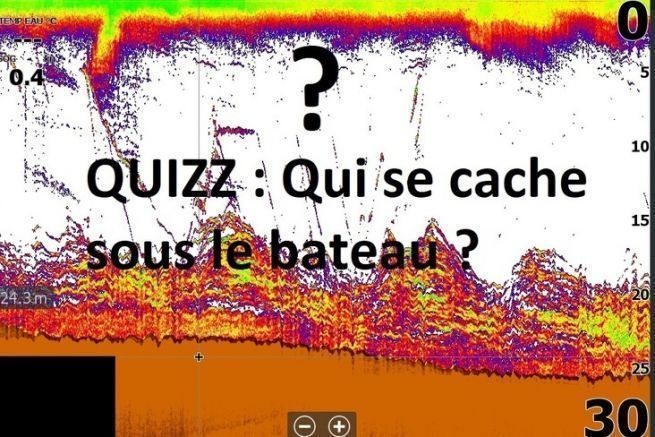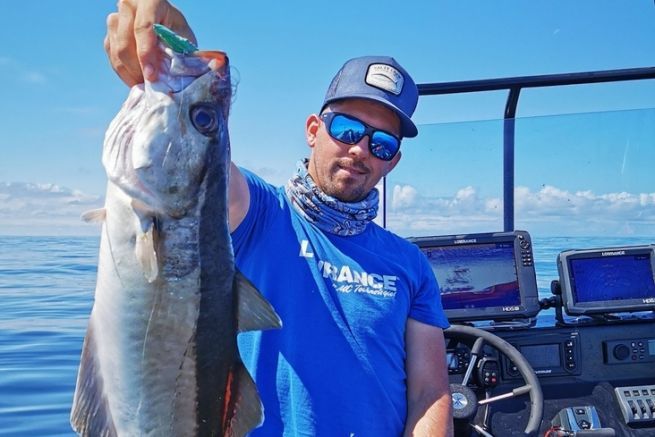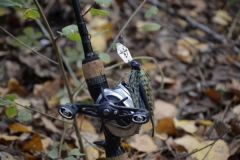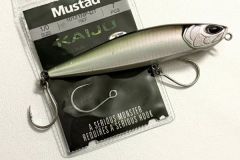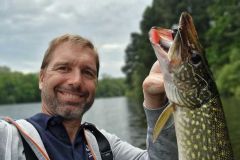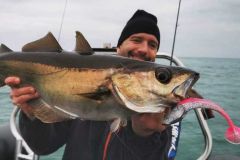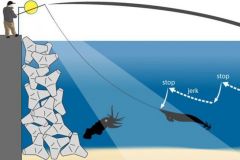Here are the answers to the quiz which asked you to guess which species are hidden behind the following sonar captures. You can find it at this link .
A trip to Ushant in March
Hints :
- Early season outing
- Fresh water at 10°C
- Area: Brittany headland - Ushant island
- Airmar CHIRP Medium probe
As well as guessing the species, try to analyze the catch and behavior of the fish.

Answer: This is a detection of pollack, fairly dense and close to the bottom. This fish is very present at the beginning of the season in the Iroise Sea area. It can be recognized by its dense detections close to the bottom. On the screen, we can see vertical lines above the detections. These are the lures in the middle of the detection cone.
No fish, but a very special technique
Hints :
- Fishing with heavy jigs
- Mainly yellow lees
- Rocky area of northern Brittany at the start of the season
Try to guess the fishing technique used?
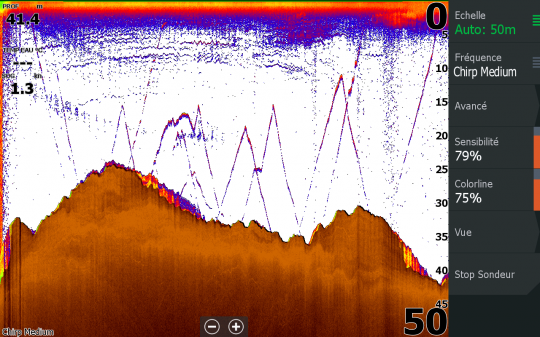
ANSWER: in this shot, no fish detection is visible. On the other hand, the animation of the lures using the elevator technique, represented by the vertical lines, is clearly visible. We can clearly see the 3 lures working in an elevator between the bottom and 15 metres below the surface. Having such a setting limits the risk of hooking, as you always know where your lure is in the water.
In the middle of nothing
Captured in September 2020, off Bréhat, in the middle of nowhere.
Hints :
- Birds on the water
- Presence of sardines (not visible on screen) but upstream of the drift.
Who do these big echoes correspond to?
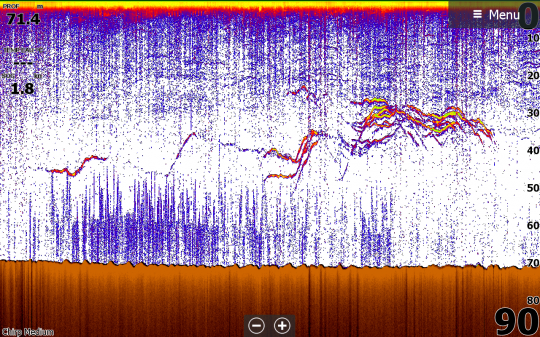
ANSWER: This kind of echo is very characteristic. Only one species on the French coast can give you such a rendering. It is, of course, the bluefin tuna. The area, here off Bréhat, the season and the presence of sardines around leaves little doubt as to the identity of the predator swimming halfway under the boat. Some of the echoes are green, which means that with this paddle (N°13), the fish are in the center of the detection cone, i.e. under the boat.
Fishing in a strong current
In an area of strong currents, under a beautiful flush of birds, I made this capture during a summer session last year on a plateau in northern Brittany.
Hints :
- Numerous birds in the area
- Rapid drift due to strong current
- Area known to harbour active fish in mid-tide at high coefficients
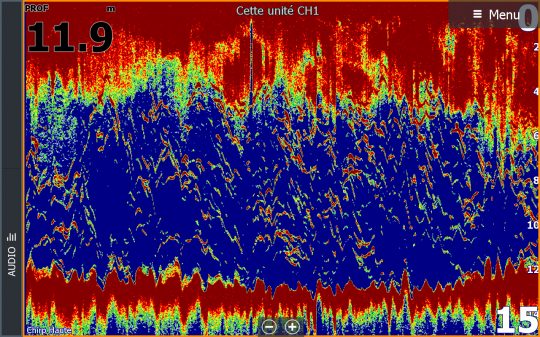
ANSWER: Under a bird hunt you'll often find active fish in the water layer. One species in particular is often found schooling in areas with strong currents. It's the sea bass.
Such distinct, well-formed echoes are characteristic of this species. There's no doubt about it, we're in the presence of a school of sea bass. Some fish are close to the surface. Attempting to trigger them with a surface lure may prove judicious if they don't respond with soft lures at depth.
A huge detection over 200m long
During high tide slack water in the Ouessant area, I took this screenshot during an outing in the spring of 2020.
It's the kind of capture we all dream of seeing one day, so dense is it.
Hints :
- Open sea slack water, little drift
- Area: Ouessant
- Season: Spring
- Technique: Fly jig fishing
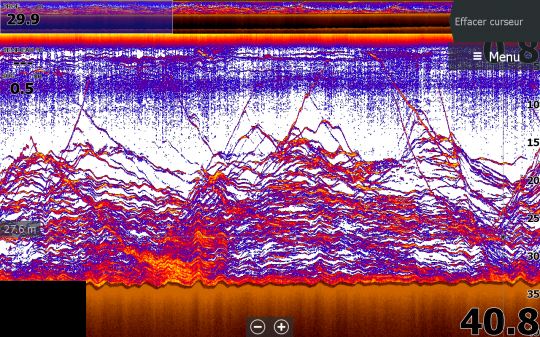
ANSWER slack water is when certain species come together to form large shoals. The Ouessant area offers a diversity of species like nowhere else, and it's common to find several different species on the same spot. In this case, the detection is a mixture of yellow and black lees. It's impossible to tell the difference between these 2 species on a fishfinder. The echoes, slightly more elongated than those of bass, as seen previously, are characteristic of pollack detections. The vertical lines between the surface and the top of the detection are fish that have been hooked and then released. In such a situation, using small jig castings on the fly is a very effective technique.
A complex capture with a wealth of information
During a June outing to the Ile de Batz area
Hints :
- A good place to find sandeel.
- Multi-species fishing
- Technique: vertical with Crazy Sand Eel 220 from Fiiish
Try to describe this capture as best you can by finding THE species present.

ANSWER for this situation, here are the explanations directly on the capture:
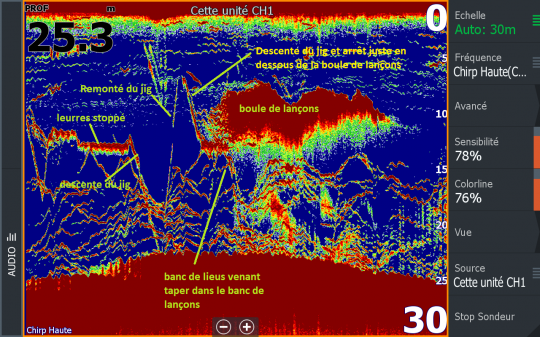
This capture provides a wealth of information! A large ball of forage fish is visible. Given the season, the area and its compact appearance, these are sand eels.
Below this ball, numerous echoes, in the shape of elongated arcs, testify to intense activity. These are yellows coming to feed. The fact that I can see the lure clearly on the screen means that I can place it just below the ball of sand eels, visible to predators, to trigger a successful attack.
On a deep zone off Cherbourg
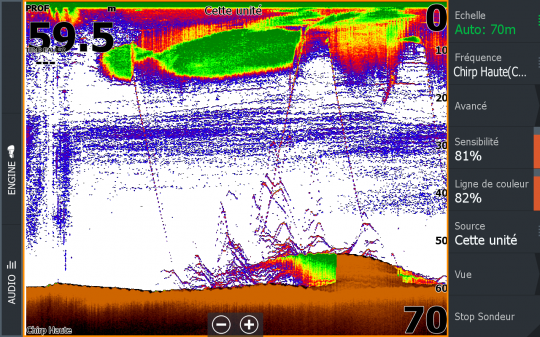
Last catch made in an area off Cherbourg, more than 15 nautical miles from the coast.
Few clues for this easily recognizable capture.
Herring jig fishing in 150 and 250 grams only.
What species are present? What type of spots?
ANSWER:
The mound visible on the seabed is no more and no less than a shipwreck. The North Cotentin area is rich in WWII relics, and this wreck is one of them. In front of it (on the left) a shoal of lees is visible. On this kind of spot and at such depth, it's very rare to find any species other than pollack. The elevator technique with large jigs is perfectly suited.

 /
/ 